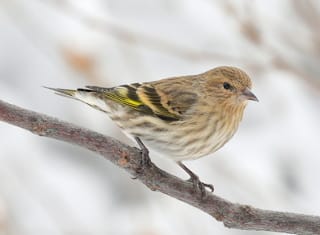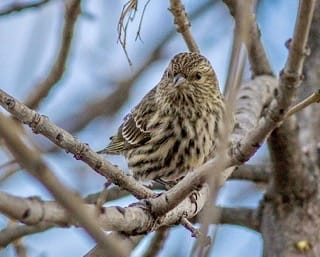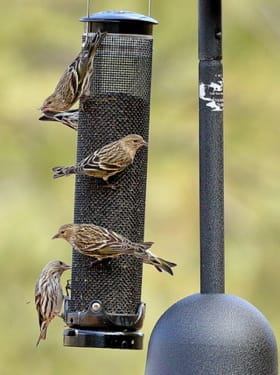Initially this guide displays common birds of all types that are flying right now in our area. Use the selectors below to view rare birds, view birds flying any time, restrict the output to a certain shape of bird, or search by name.
New Mexico is on the western edge of the Central Flyway which is one of the major migration pathways between north and south for birds traveling between breeding and wintering grounds along the Rocky Mountains. This has resulted in the state having an incredible diversity of birds with over 550 different species reported. A little more than half of this number are sighted annually on the Pajarito Plateau. Some of these birds are full-time residents, some migrate here for a few weeks or months, and other are only seen briefly as they pass through the region.
This guide features many of the birds known to frequent Los Alamos county by when they are likely to be seen in the area. You can get additional information on local birds by joining PEEC Birders or going to the eBird website. eBird also includes lists of rare bird sightings and birding hot spots.
Bird References
Birdweb
Cornell Lab of Ornithology
eBird
eNature
Institute for Bird Populations
National Audubon Society
New Mexico Ornithology Society
What Bird
xeno-canto
Subject Area Experts (all guides)
Steve Cary (butterflies)
Beth Cortright (insects)
Terry Foxx (invasive plants)
Leslie Hansen (mammals)
Richard Hansen (fish, mammals)
Dorothy Hoard (butterflies, trees)
Chick Keller (flowers, herbarium)
Shari Kelley (geology)
Kirt Kempter (geology)
Garth Tietjen (reptiles)
David Yeamans (birds)
Web Development and Content Management
Pat Bacha
Jennifer Macke
Graham Mark
Akkana Peck
Contact
Please contact us for local nature questions and sightings. We welcome comments, corrections, and additions to our guides.
For more information about local nature, please visit our Nature Blog or subscribe to PEEC This Week.
Make Selection
 Photo: male by Bob Walker  Photo: female by Mouser Williams  Photo: raiding thistle feeder by Bob Walker |  Pine Siskin, Pine LinnetPISI (Carduelis pinus, Spinus pinus)Family: Fringillidae (Finches) Size: 4.5 - 5 in (11 - 13 cm) Flies: Jan 01 - Dec 31 Morphology: males are grayish brown with brown striping and yellow edges on both wings and tail; females are more brownish with much less yellow Status: native; common Food source: mostly seeds and other vegetable matter; some insects; may eat flower parts and young shoots Habitat: mixed woodlands, thickets, brushy pastures Although Pine Siskins are patterned like sparrows, their overall behavior emphasizes that they are related to goldfinches. They actively forage for seeds in trees and shrubs and can spend all day at a thistle feeder. Pine Siskins are an irruptive species meaning that they can have an irregular migration pattern, i.e., large flocks of these birds are sometimes observed in unexpected areas. Pine Siskins may nest in loose colonies or isolated pairs. Cup-shaped nests are usually well hidden in a conifer. Incubation time is about 2 weeks with the young leaving the nest 2 weeks later. Info Photos Distribution Frequency Featured |
